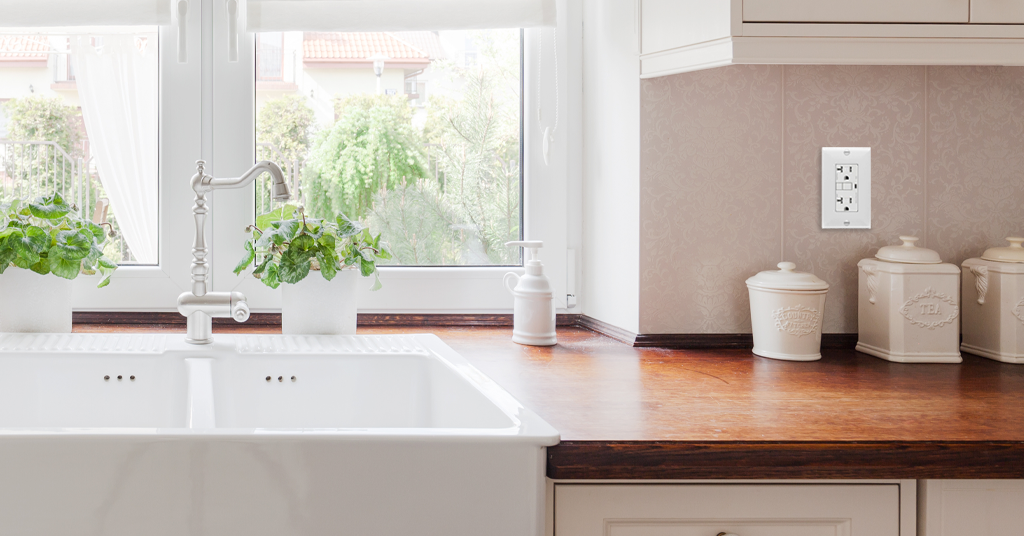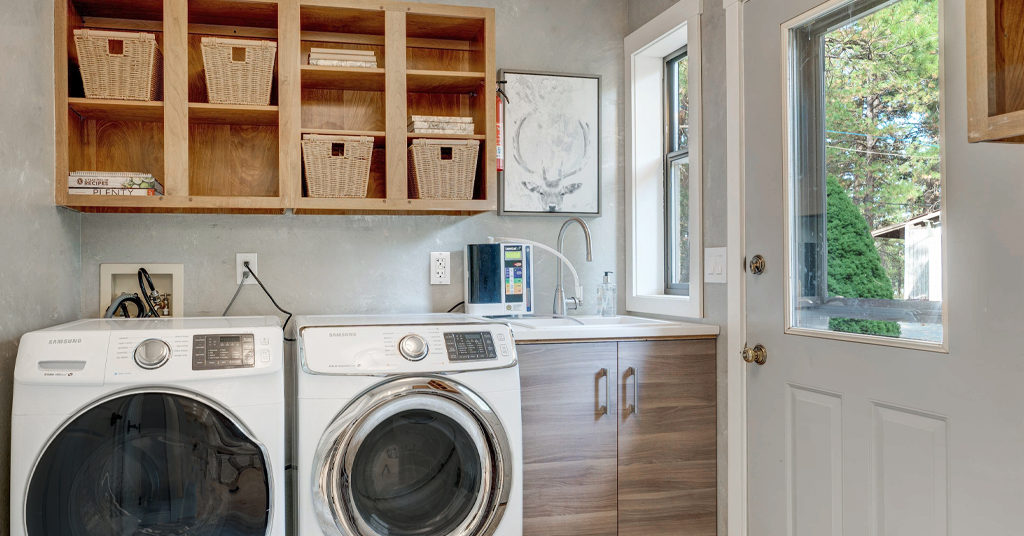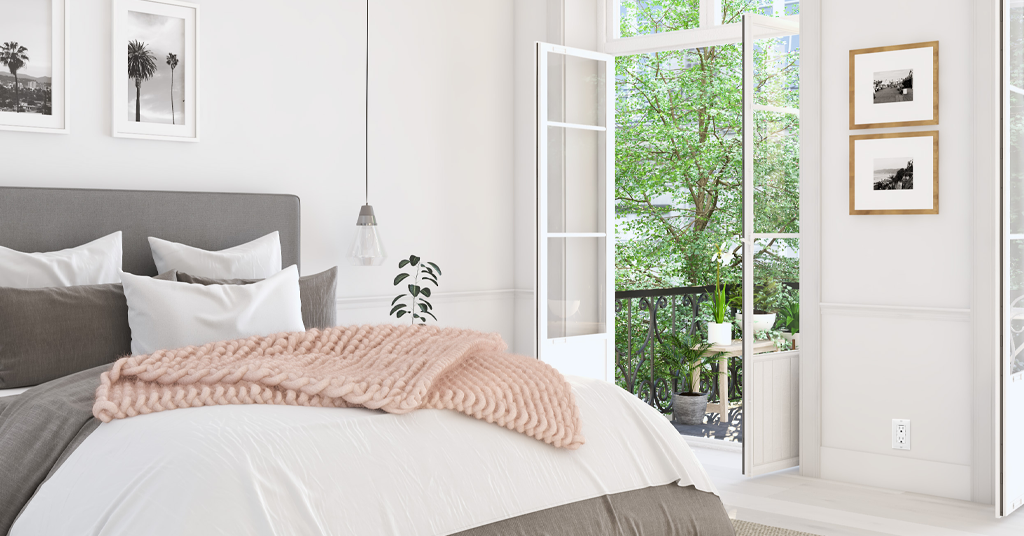All About Receptacles- A Crash Course Guide To Plugging Into Your Home

When it comes to lighting technology, we’ve all heard of receptacles and outlets, and commonly interchange the two terms. But what most people might not know is the specifics. What is a receptacle, and what are the common kinds? The 2020 National Electric Code Book defines a receptacle as “a contact device installed at the outlet for the connection of an attachment plug, or for the direct connection of electrical utilization equipment designed to mate with the corresponding contact device.” This is different from an outlet, which is just where the electrical current is taken to supply equipment. Now that we know the difference between the two, let’s go over the different kinds of receptacles.
15 AMP
15 amp receptacles are commonly used for small appliances such as lamps, microwaves, toasters, and coffeemakers. They are the most common receptacle type found in homes, and are usually found in living areas or bedrooms. As a result, they are also frequently used for charging portable electronic devices.

20 AMP
20 amp receptacles have higher power capabilities, so they are commonly used for larger appliances such as ovens, fridges, electric stoves, washing machines, and power tools. You’ll most likely find them in your kitchen or garage.
GROUND-FAULT CIRCUIT INTERRUPTER (GFCI)
GFCI receptacles are explicitly meant to combat ground faults. A ground fault happens when electricity from a receptacle strays from its planned path to the ground. As a result, the electricity becomes unregulated and dangerous very quickly and can cause fires, burns, or even harmful shocks if directly touched. A GFCI receptacle is meant to counteract this event by immediately cutting off all power to the circuit as soon as a ground fault occurs, within a fraction of a second. The most common cause of these ground faults is moisture, so GFCI receptacles are found in kitchens, garages, bathrooms, and yards.

There are a lot of different receptacles throughout a common household, all with different uses, abilities, and looks. With so many technical differences at hand, it can be pretty confusing to tell them apart at first glance. Keep reading to learn more on each, and become a pro in all things receptacle!
VISUAL DIFFERENCES
The most obvious way to tell receptacles apart is how they look. In fact, you may have already noticed these differences on a day-to-day basis.
The best way to differentiate the two standard receptacle types is based on which sockets they have. Take a look at the picture below. You’ll see that the 15 amp (15A) receptacle has two standard vertical sockets while the 20 amp (20A) variation has a T-shaped socket on the left.

GFCI receptacles also have a very specific design. Each one is equipped with two grounding switches placed directly in the middle of the receptacle. These act as the mechanism that cuts off power, and will make that signature popping sound when set off. You may have heard that sound on rainy days when electrical equipment outside is more easily exposed to moisture. GFCI receptacles come in either 15A or 20A power, but they are the only kind that has these buttons.
ELECTRICAL DIFFERENCES
The receptacles detailed in this blog have a number of electrical differences as well. Again, we’ll look at the differences between a 15A and 20A, and then a GFCI receptacle versus normal.
Each type of basic receptacle will only work off of the same (or greater) power level of the overall circuit and circuit breaker/fuse. The key difference lies in the type of wiring necessary for each. 15A receptacles require 14-gauge wire to work properly. 20A receptacles, on the other hand, require either 12 or 10-gauge wiring. An interesting tidbit to know is that 15A receptacles will work off of a 20A circuit, but not the other way around.
GFCI receptacles have many more differences at hand, mostly due to their versatile nature and unique safety features. They were not common until after 1973. Prior, electrocution rates at home were through the roof. But since their introduction to the market and thanks to the implementation of stricter safety standards in residential wiring requirements the Electrical Safety Foundation International has reported that there has been an 83% percent drop in electrocutions overall, and a 95% decrease in electrocutions from consumer products.

The practicality of the GFCI created a need for specific NEC codes to place them in all households. Along with these codes came very distinct electrical and placement needs. For one, certain environments in the home must have GFCI receptacles, no matter their intended use. These include bathrooms, garages, crawlspaces, outside areas, basements, kitchen countertops, and any area within six feet of sinks or laundry machines. It should be noted that outdoor GFCI receptacles require a watertight cover no matter what. Additionally, one GFCI load can sufficiently ground all outlets in its circuit. In other words, as a general rule, only one of the outlets in a given room needs to be a GFCI.
PROPER USE AND APPLICATIONS
The types of receptacles we’ve talked about have an insane amount of applications. The 15A model can be used in living rooms, TV rooms, lounges, dining rooms, bedrooms, family rooms, home offices, personal libraries, and even closets. Beyond that, they even have applications in commercial areas such as classrooms, gyms, recreation centers or offices. Twenty amp receptacles can handle powerful electronics, and are great for kitchens, garages, theater or game rooms, basements, laundry rooms, at-home bars, and break rooms. The GFCI model is your go-to for moisture-ridden areas such as kitchens, basements or attics, bar tops, bathrooms, laundry rooms, garages and more.

Though a versatile mix of receptacles may be your best friend in a bustling home, it is important to remember the safety risks they may pose. Fires, burns, and of course shocks are all possible without proper safety protocol. We recommend circulating the following safety tips to all members of your household.
- Outlets and cords should be checked and updated regularly.
- Make sure to safely unplug cords by pulling slowly from the base of the plug
- Childproof all outlets with either plastic prongs or tamper-resistant technology
- Avoid overloading outlets by plugging major appliances into their own outlet and limiting the amount of equipment turned on at one time
A GFCI outlet will definitely save you more often than not, but they aren’t perfect. Malfunctions may still occur if left unattended. As a result, regularly maintain them as you would any other receptacle. This will avoid any chance, however slight, of issues or shocks.
Lastly, keep up to date on building code necessities. Beyond GFCI requirements, there are also outlet space requirements to look out for. Many homes require certain maximum distances that appliances are allowed to be plugged in from. These were put in place to make sure lengthy, dangerous wiring does not interfere in home settings. If you’d like to find a more detailed catalog of these requirements, check with your local building permit department.

